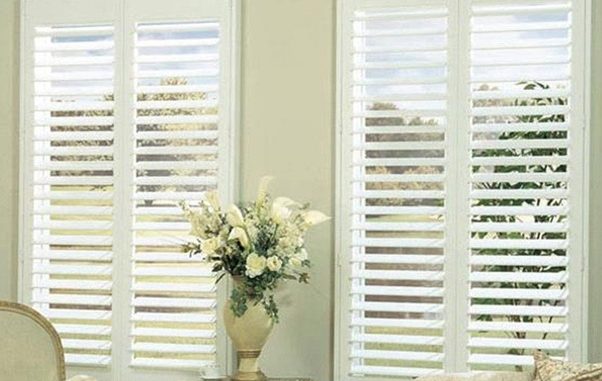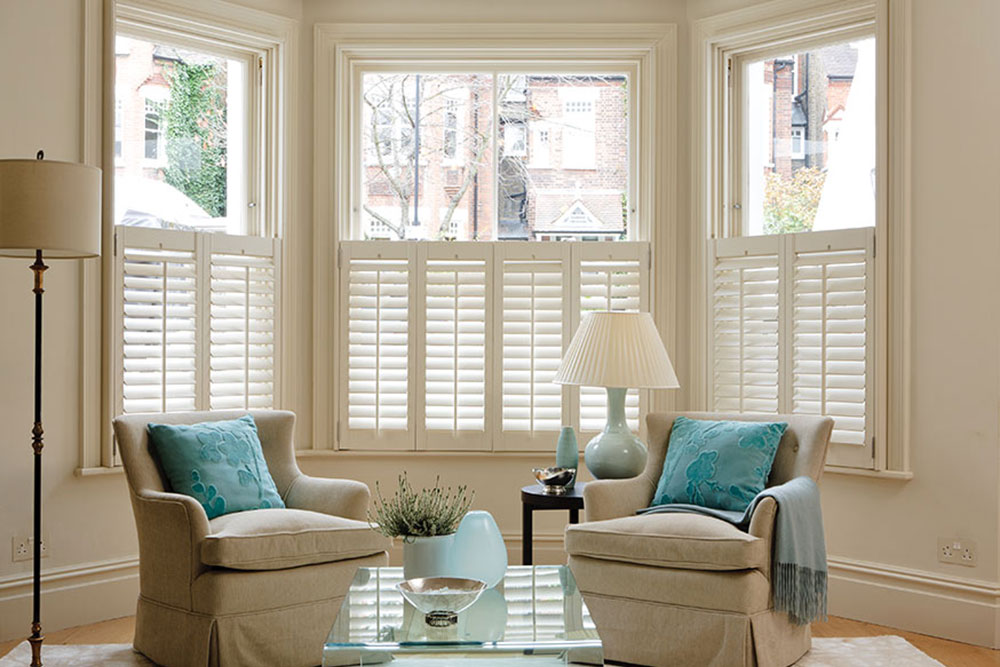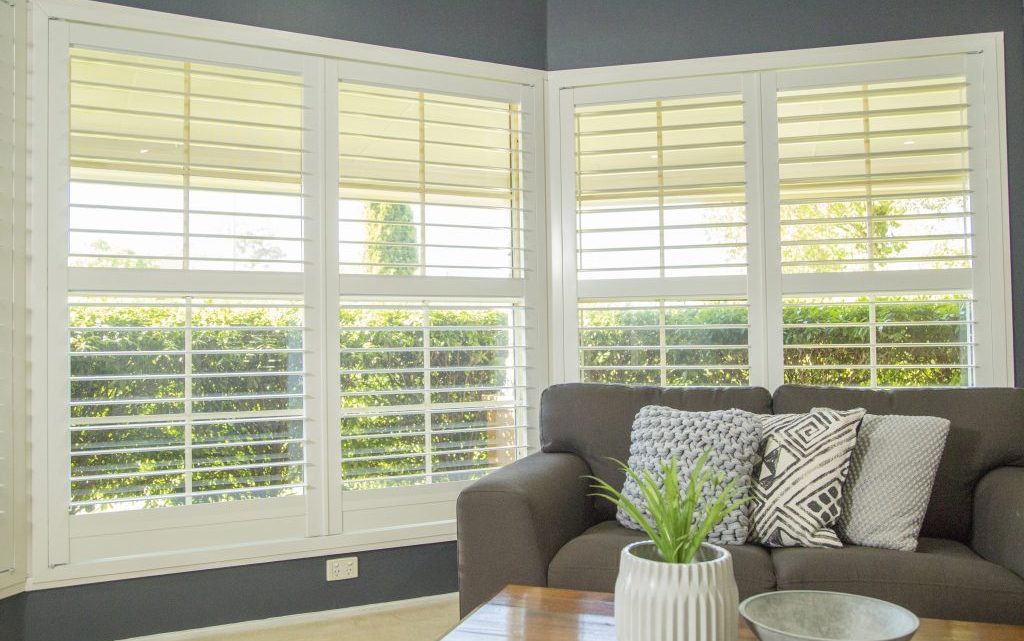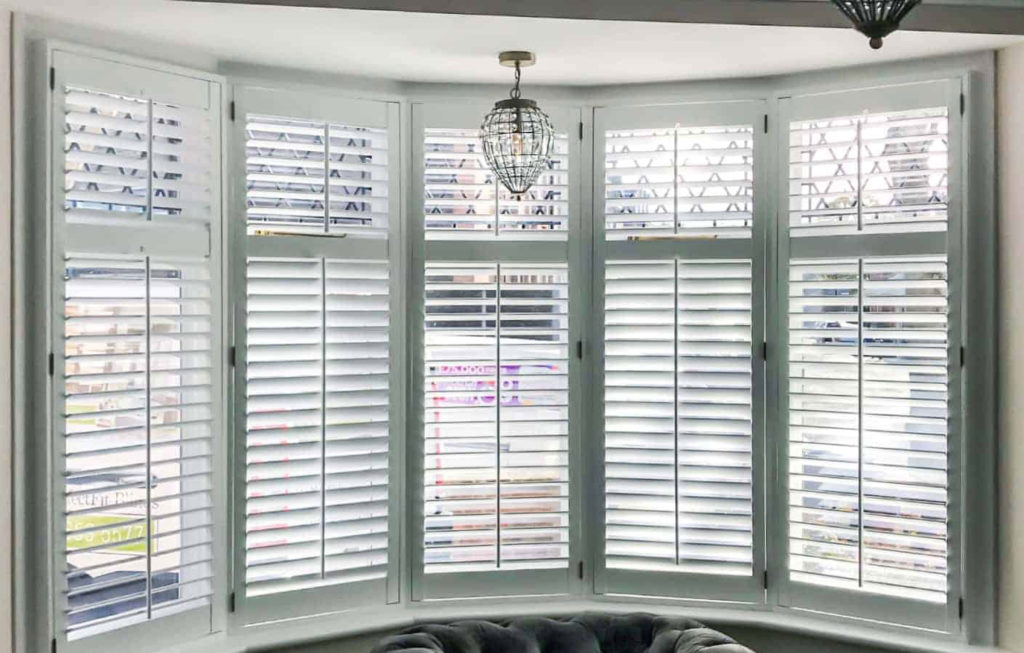
Window treatments can transform a room into a cosy warm and inviting place where friends and family can get together to relax and have fun. One of the most popular forms of window treatments are window shutters. Window shutter treatments come in many different styles and materials. There are also many ways that they can be installed. The most chosen method of installation is inside of the window frame itself, or you can use a window strip and place it on the outside of the window frame.

Plantation Shutters are an investment in your home and fine furniture for your windows. Here are 10 questions to consider when deciding on shutters.
Wood or Composite – Both products have pros and cons. Composite may help keep shutters within a budget. Wood is lighter weight allowing you in some cases to have fewer panels and gives the option of broader paint choices, stains and in some case custom paints or stains.
Paints or Stains – I am personally a great fan of paints and matching baseboards. Paint will work in any room and really POPS off the wall with a contrast colour behind it. It is also a safe choice in the event you sell your home. The stains allow you to see the different grains as well as bring warmth in the room.
Inside Mount or Outside mount install – This choice could be made for you if you have little sill space which will not accommodate an inside mount frame. These days it is difficult to find windows that are square. Manufactures will usually list anything ¼” outside of square should move to OM frame. I will do windows outside of this tolerance on a case by case basis. If you are windows are extremely unsquared then the OM frame is the logical choice. There are some dealers that prefer to do OM frame when the customer has bull nose windows. It is a little more difficult to install, but it is possible to stay with the IM frames.

Frame Style – While you may see shutters on the east coast without frames because the windows already have casing, this is a rarity on the West Coast or at least here in Arizona. The L frame was a standard year ago and usually an Outside mount application. The L frame gives you about a 1″ of frame. I rarely use L-Frames now except for Doors/French Doors. Deco Frames are frames that give outside mount customers a more ornate looking frame and usually run from 2″ to 3″ wide. The most popular frame choice is the Z frame. The Z frame is an inside mount frame and is called a Z frame because it looks a Z. Part of the frame goes into the sill and part covers the outside wall like a picture frame. They are usually from 1″ to 3″ wide. You must be careful when choosing a 1″ Z frame when you have bull nose windows. After taking proper deductions to fit the shutter in the window the 1″ Z frame will fall around the bull nose part of the window. This gives an un-clean look and can also increase light gaps.
Louver Size – Most Manufactures will give you a choice of a 2 1/2, 3 ½ and 4 ½ louver. We rarely do 2 ½ louvers. One of the benefits to shutters is having the bigger louvers which mean better vision and light. In some of the ranch style homes where the window height is around 24″ the 2 ½ louver works. Usually you will want the heights to be around 72″ or so for the 4 ½ louver to work. The 4 ½ louver can overwhelm small windows. Just like the 3 Bears, the 3 ½ louver is the perfect size louver. It is great for vision and light and looks good in almost all windows.
Divider Rails – Divider rails give you the option to keep the lower portion of the panel louvers closed while giving you privacy and allowing you to open the top portion to allow light. In some instances, a divider rail will be necessary to give larger panel strength. One con of the divider rail is it essentially replaces a louver and you will not be able to see through it.
Split Tilt Bar – For those that want the divider rail option without the divider rail can go with a split tilt rod. The tilt bar will be cut and give you the ability to control the bottom and top panel louvers separately.
Tilt Bar/Hidden Tilt – The standard option on shutters will have a ½” or so tilt bar going down the panel which connects the louvers allowing you privacy and light control. If you want a clearer vision though the louvers and tad bit easier way to clean the louvers you can go with a hidden tilt system at a surcharge. Some manufactures also offer an offset tilt bar. This option puts the tilt bar on the left or right side of the panel instead of the middle and it is also offered at a surcharge.

Hinges – You have choices of paint colour hinges and metal colour hinges like bright brass, antique brass, oiled rubbed, nickel plated and stainless steel. Some manufacturers also offer an invisible hinge option as a surcharge.
Panel Configurations – Composite panels are usually up to 30″ wide while wood panels can go up to 36″ wide. There are a handful of manufactures that do build composite panels up to 36″. Fewer panels will have fewer rails, more window view and allow more light. Window size will decide how many panels you will have. You can then decide which way it is hinged to open. On some of the bigger window’s up wards of 72″, you will have a choice of adding T-Post which also helps with the frame integrity.
Lucky Curtains & Blinds provides made-to-measure window coverings. Since 1980, their products have been adorning homes, apartments and offices throughout Sydney, NSW. Get in touch with the experts to get started on your window treatment!

Leave a Reply